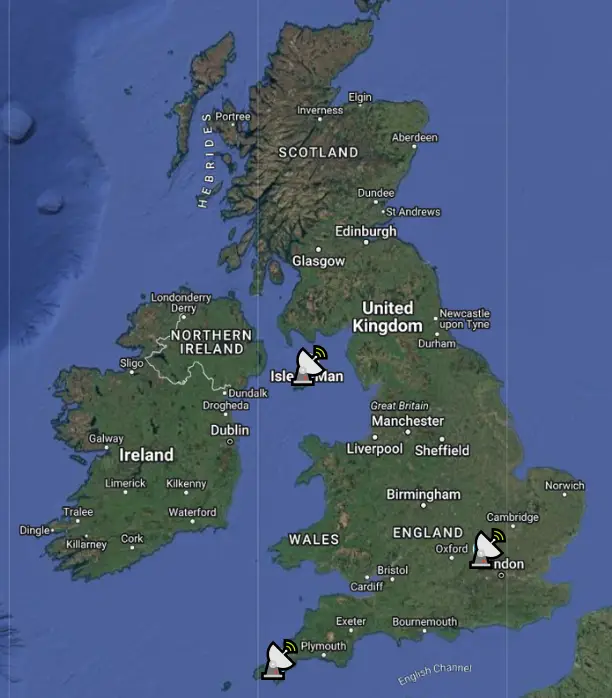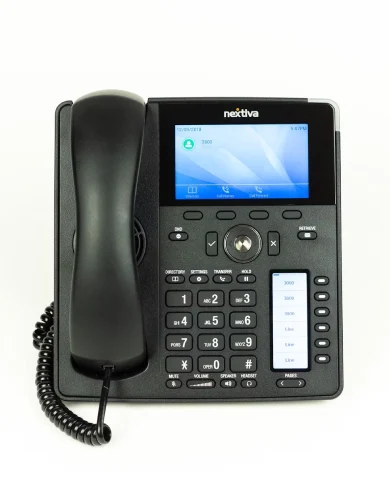Starlink: Business connectivity from anywhere
Starlink is the UK’s leading satellite internet service provider, serving high-performance broadband to at least 84,000 subscribers. Among these are rural businesses that have long struggled with sluggish connectivity until Starlink came along.
This article covers Starlink for businesses, its disruptive use cases in underserved areas, how to optimise its performance, and what Starlink v2 and v3 will bring over the next few years.
Contents
- What is Starlink?
- The growth of Starlink in the UK
- Performance of Starlink Business Plans
- Starlink business use cases
- Business Starlink installations
- The future of Starlink for UK businesses
What is Starlink?
Starlink is a satellite internet service that delivers high-speed broadband to homes and businesses in over 100 countries via a network of thousands of light-weight, low-earth-orbit (LEO) satellites.
It provides a plug-and-play solution for simple and complex network setups, shipping an antenna, cabling, power supply and router, and straightforward installation and deployment instructions.
Starlink offers high-performance business broadband, typically delivering 100+ Mbps download speed and latencies below <60ms, suitable for most business tasks like using business VoIP phone systems, video conferencing, and cloud-hosted platforms.
A clear view of the sky is all that is needed to connect, with coverage typically available across 100% of Britain, including the 200-mile sea borders.
This combination of simplicity, availability and affordability makes Starlink popular for a wide range of business applications, including:
- High-performance backup connections for rural businesses
- Connectivity in remote areas beyond fibre optic and 4G/5G networks
- Internet access for motorhomes, marine vessels, and aeroplanes
Starlink is operated by Elon Musk’s Space X, which manufactures and launches the satellites from its facilities in the US.
How did Starlink originate?
Starlink was publicly announced in 2015 when SpaceX opened its satellite development facility in the US.
However, its origins trace back to an earlier project called WorldVu, where Elon Musk collaborated on plans for a satellite internet constellation.
After disagreements, WorldVu split into two competing companies, Starlink and OneWeb, with Starlink quickly dominating much of the satellite internet market.
Despite this, Starlink faced numerous technical and regulatory challenges. Its current network is the result of years of satellite engineering refinements and regulatory negotiations.
The first Starlink satellites launched in 2018, and it took three years for the service to become available to UK businesses.
The growth of Starlink in the UK
Starlink launched its UK operations in 2021, initially targeting residential users in rural and underserved areas. In 2022, it expanded to include Business Plans designed for commercial users, offering higher-priority traffic and specialised features.
Its growth in the UK has been rapid, with thousands of new subscribers joining each year:
- 2022: 13,000 subscribers
- 2023: 42,000 subscribers
- 2024: 87,000 subscribers
Most of these subscribers are in rural areas, highlighting Starlink’s role in bridging the UK’s notorious connectivity gap (Looking at the lack of Gigabit Voucher Scheme support, Openreach!).
To connect its satellites to the UK’s backbone internet network, Starlink operates three ground stations:
- Chalfont Grove (Buckinghamshire)
- Goonhilly (Cornwall)
- Isle of Man

As of 25 January 2025, Starlink has 5,965 active satellites, with around a dozen typically serving UK subscribers at any given time.
The upcoming rollout of V2 satellites and next-generation antennas is expected to bring significant performance upgrades, including 1Gbps+ speeds, improved coverage, and integration with mobile networks (see the Future of Starlink section for details).
Performance of Starlink Business Plans
Starlink’s performance in the UK is comparable to low to mid-tier full fibre business broadband or 5G business broadband, depending on location, antenna type, and priority data allowances.
Typically, Starlink business broadband delivers download speeds in the hundreds of Mbps and latencies around 50ms, suitable for high-quality VoIP calls, UCaaS, and collaborative tools like Google Docs.
Here are its general performance metrics, updated to 2025:
Starlink general performance metrics
| Performance Metric | UK Business Starlink |
|---|---|
| Download Speed | 25–220+ Mbps |
| Upload Speed | 5–25+ Mbps |
| Latency | 20–60 ms |
| Uptime | 99%+ (excluding severe weather or maintenance) |
| Contention Ratio | 1:20–1:50 (varies by level of service) |
| Coverage | Full UK landmass and surrounding coastal waters |
| Support | 24/7 premium customer support for business users |
| Monthly Cost | Approx. £80–£1,000+ (depending on plan and usage) |
| Hardware Cost | £300–£2,470 (one-time fee for equipment) |
Now, let’s explore the key factors you can control to optimise performance:
Starlink priority data allowances for business plans
Starlink business broadband includes a priority data allowance, which ensures higher bandwidth access during network congestion. While it’s not a fully uncontended service like leased line business broadband or dark fibre connection, priority data prevents throttling during peak traffic times.
The amount of priority data depends on the plan you or your Managed Service Provider choose, with current options for fixed business users:
- 40GB – £80/month
- 1TB – £150/month
- 2TB – £300/month
- Custom allowance – £1,000+/month
Once your allowance is used up, the connection reverts to a standard Starlink service, which is contented and shares bandwidth with the rest of the standard users. This means performance may fluctuate during peak times.
Starlink antenna performance and features
Starlink currently offers four different antenna options, each designed for specific applications with varying performance levels, durability, portability, integration capability, and cost.
In general:
- Standard and mini antennas: More affordable but with limited performance and integration features. The Mini is fully portable.
- High-performance antennas: Offers improved performance, weather resistance, and ports for network integration, making them suitable for enterprise and mobile applications.
Starlink antenna comparison
| Feature | Standard Antenna | Mini Antenna | High-Performance Antenna | Flat High-Performance Antenna |
|---|---|---|---|---|
| Target Users | Small businesses | Portable applications | Businesses & high-demand users | Mobile applications (vehicles, maritime) |
| Download Speed | 25–100 Mbps | 25–100 Mbps | 40–220 Mbps | 40–220 Mbps |
| Upload Speed | 5–10 Mbps | 5–10 Mbps | 8–25 Mbps | 8–25 Mbps |
| Router | Included (Wi-Fi 5, 802.11ac) | Included (Wi-Fi 5, 802.11ac) | Not included | Not included |
| Network Integration | Standalone setups, limited integration | Portable use only | Fully configurable, supports custom networks | Fully configurable, supports custom networks |
| Static IP | Supported in business plans | Not supported | Supported in business plans | Supported in business plans |
| Field of View (FoV) | ~110° | ~110° | ~140° | ~140° |
| Shape | Rectangular | Square | Square | Square |
| Dimensions | 513mm × 303mm | 298mm × 259mm | 578mm × 511mm | 578mm × 511mm |
| Weight | 2.9 kg (6.4 lbs) | ~1.1 kg (2.5 lbs) | 9.2 kg (20.3 lbs) | ~13 kg (~28 lbs) |
| Power Consumption | ~50–75 W | ~50–75 W | ~110–150 W | ~110–150 W |
| Weather Resilience | Moderate | Moderate | High | Very High |
| Obstruction Handling | Basic | Basic | Good | Excellent |
| Mobility | Not suitable | Highly portable | Not suitable | Optimised for vehicles, yachts, and planes |
| Cost | £299 | £200–£300 | £659 | £2,470 |
| Environmental Rating | IP67 | IP67 | IP56 | IP56 |
| Snow Melt Capability | 40 mm/hour | 40 mm/hour | 40 mm/hour | 40 mm/hour |
Other factors affecting Starlink performance
Beyond antenna choice and priority data, Starlink’s performance also depends on other features like location relative to Starlink ground stations and how well your system is deployed.
Distance to ground stations
The closer your site is to one of the three UK ground stations, the lower your latency. A shorter signal path reduces reliance on inter-satellite links (offered by v2 mini-satellites), which can introduce additional latency for fixed sites.
Mounting and Installation
Your antenna’s ability to maintain a strong connection depends on proper mounting and positioning, ensuring it has an unobstructed view of the sky and is securely fixed. Note how different antennas have different obstruction tolerances, so consider this when choosing.
For businesses integrating Starlink into complex LAN or WAN setups, performance will also depend on how well it integrates with networking software like SD-WAN solutions and SASE (Secure Access Service Edge), which optimise and secure traffic.
For more details, see our section on Starlink Installations.
Weather and motion
Starlink operates on high-bandwidth frequencies optimised for long-distance satellite communication. However, intense weather conditions, such as heavy rain, storms, and rapid snow accumulation, can temporarily impact performance.
While Starlink includes a snow-melting feature, it is limited to 4mm per hour, meaning excessive snowfall may cause disruptions.
Motion can also affect the performance of Starlink installed for vehicle and boat connectivity. While the Flat High-Performance Antenna is designed for movement, rough conditions or abrupt directional changes may lead to temporary signal loss.
Starlink power consumption
Unlike traditional tethered broadband, Starlink antennas consume significant electricity to track satellites, transmit data using high-power phased-array technology, and power its snow-melting feature.
Assuming 24/7 usage and an electricity price of £0.255/kWh (average UK business electricity prices, Jan 2025), the estimated mean annual electricity costs per antenna type are:
- Standard and Mini antennas (50-75W): £167.54 per year.
- High-performance antennas (110-150W): £368.59 per year.
Starlink business use cases
While Starlink covers the entire UK, its adoption has been strongest in rural and underserved areas, where it is often the only viable high-bandwidth option.
Since launching in 2022, businesses have integrated Starlink in several ways:
Remote connectivity
The most common use case is providing high-performance broadband to businesses and public organisations in areas where fibre optic or mobile business broadband is unavailable.
Starlink has been deployed as a primary broadband connection by supermarkets, shops, schools, cafes, hotels, solo entrepreneurs and others amongst a large variety of rural businesses.
It enables applications that were once seen as impossible with ADSL (broadband over traditional business phone lines), such as:
- Real-time transaction processing to enable card payments
- Inventory management for stocking large shops.
- VoIP integrations for sales teams and technical support.
- Event and temporary venue connectivity for festivals.
- Remote VoIP for uninterrupted communication in construction sites.
Backup and redundant connections
Many businesses use Starlink as a backup and redundant connection alongside a leased line or SoGEA connection to provide a backup in case of failure or congestion.
In rural areas, traditional backup options may not offer true redundancy, as failover leased lines often share the same ducts and poles as the primary connection. Starlink provides an affordable, wireless alternative to mobile broadband or wireless leased lines, protecting businesses from:
- Physical network failures (e.g., damaged fibre cables)
- Provider-related service disruptions (e.g. BT, Virgin Media, Talk Talk)
- Congestion on the primary broadband line
IoT applications
Industries like agriculture, quarrying, forestry, renewable energy, construction, and wildlife research are rapidly modernising with IoT technology enabled by Starlink.
Starlink business plans offer the required performance to enable advanced applications in offline areas:
- Precision agriculture tools
- Crop and forest health monitoring
- IoT wildlife cameras and sensors
- Automated equipment control
- Live drone streaming
Maritime and offshore operations
Starlink has transformed connectivity for offshore businesses, including commercial shipping, offshore energy, fishing, and yachting.
It provides features that were previously expensive and of lesser performance:
- Connectivity for crew welfare and guest entertainment.
- Real-time vessel performance monitoring
- Weather and route optimisation
Note that a High-Performance Antenna enabled for mobile use is required for maritime and any mobile applications.
Business Starlink installations
Starlink installations are relatively simple, but there are several things to consider. Let’s look at each aspect separately.
A plug-and-play solution
Starlink is designed as a simple, plug-and-play solution that requires minimal expertise. Solo entrepreneurs and small shops in rural areas can often be up and running within hours after safely mounting the antenna on their roof.
Even for more complex setups, such as auto-failover, load balancing, and WAN integrations, Starlink provides the necessary ports and compatibility to ensure seamless deployment for IT teams.
This flexibility makes Starlink a viable solution for both micro-businesses and larger enterprises. Here’s an overview of how different businesses typically deploy Starlink:
Small business Starlink deployment
The standard business plan with a standard antenna and router is usually sufficient for small businesses, such as high street shops or solo entrepreneurs.
Once the Starlink kit arrives by post, users simply need to configure the antenna on the ground, ensuring all necessary updates are installed before mounting.
The most critical step is choosing the right installation spot, where the antenna has a clear view of the sky and is securely fixed in place, with cables running efficiently to the router’s location.
Once powered and connected, Starlink provides a WiFi 5 network, delivering reliable broadband across the business premises.
For those needing broader WiFi coverage, such as cafes or small B&Bs, a simple mesh network with Guest WiFi can be added to extend the signal without major technical complexity.
Sophisticated Starlink deployments
For larger businesses like hotels, supermarkets or farms with IoT, a high-performance business plan is preferred because it includes a more powerful antenna and enhanced networking capabilities.
Businesses deploying Starlink at this scale typically incorporate Next-Generation Firewalls (NGFWs) for enhanced security and compliance, alongside enterprise-grade network switches that support VLAN segmentation and load balancing at the LAN scale.
In some cases, companies incorporate Starlink to their SD-WAN deployments to manage it as a primary or backup connection alongside traditional broadband or business Ethernet connections, ensuring dynamic traffic routing for improved redundancy and performance.
Given the complexity of these setups, proper planning, testing, and ongoing network optimisation are essential to ensure that Starlink operates at its full potential within a wider business network.
Considerations for specific business deployments
Starlink caters for a wide range of business applications, but each use case presents unique installation and integration challenges. Below is a breakdown of key business types and the factors distinguishing their deployments:
| Use case | Installation and integration challenges |
|---|---|
| General | Obstructions from nearby buildings or trees may reduce signal strength. Mounting location is crucial. |
| Rural businesses (e.g., farms, chalets, B&Bs, shelters) | Extending connectivity across multiple buildings may require Ethernet or mesh WiFi. IoT devices need custom network configurations. Off-grid sites may require solar power solutions. |
| Construction and temporary sites | Frequent relocation requires retesting at each site. The antenna must be protected from dust, debris, and vibrations. Secure portable mounting is recommended. |
| Hospitality | Requires VLAN segmentation for guest and business traffic. Large sites need multiple access points for full coverage. Firewalls improve security and bandwidth management. |
| Maritime (Boats/Yachts) | Needs Flat High-Performance Antenna with corrosion-resistant mounting. Power stabilisation prevents fluctuations. Must support GPS, navigation, and onboard systems. |
The future of Starlink for UK businesses
Starlink is rapidly expanding its satellite network, improving performance and integrating seamlessly into UK broadband infrastructure. See the growth of Starlink in the UK section for on its rapid progress.
The coming years bring exciting developments, particularly for businesses relying on high-performance, uninterrupted connectivity:
Improved performance
SpaceX plans to boost Starlink speeds from 200–300 Mbps to 1 Gbps or higher, driven by more advanced satellites and improved antenna technology.
- V2 Mini satellites (3,086 launched as of 25 Jan 2025) are already improving coverage via inter-satellite links.
- Full-sized V2 satellites (launching 2025–26) will offer lower latencies, faster speeds, and Direct-to-Cell connectivity for mobile integration.
- Next-generation antennas (e.g., the rumoured Gen 3 user terminal) will feature dual-band Ku/Ka capabilities and enhanced phased array technology for better performance in extreme weather.
- Long-term expansion includes up to 30,000 satellites and potential quantum communication technologies for improved security and efficiency.
Integration with mobile broadband
The upcoming Direct-to-Cell service (enabled by V2 satellites in 2025–26) will merge satellite and mobile broadband, allowing Starlink to complement 5G and 4G networks when coverage is limited. Businesses can expect hybrid satellite-mobile broadband services to emerge in the next few years.
Reduced costs
As Starlink expands and competitors like Amazon’s Project Kuiper enter the market, greater competition will reduce business broadband costs and improve service affordability.
Aviation connectivity
Starlink has received regulatory approval for in-motion aviation connectivity in the UK. While no UK airlines have adopted it yet, SAS plans to roll out Starlink across all flights by late 2025, paving the way for broader industry adoption.
Starlink for businesses – FAQs
Our business broadband experts answer frequently asked questions about Starlink deployments in the UK.
Is Starlink available throughout the UK?
Yes, Starlink is available across the entirety of the UK and its maritime area.
How reliable is Starlink’s internet service?
Starlink offers >99% uptime, though occasional brief outages can occur due to satellite handoffs, extreme weather, or maintenance. Performance may vary, particularly for standard Starlink data.
Can Starlink support multiple users and devices within a business?
Yes, even the standard business plan includes a router and sufficient priority bandwidth for multiple users. Enterprise plans offer higher bandwidth to support larger teams, offices, and connected devices.
What support options are available for Starlink business customers?
Starlink offers 24/7 priority support for all business plans, including faster response times, a dedicated support team, and troubleshooting tools. Businesses using Managed Service Providers normally receive deployment and ongoing operational support.
How can I determine if Starlink is the right choice for my business?
Starlink is one of several business satellite broadband solutions in the UK. We recommend speaking with our expert partners (no commitments) to find the best solution for your needs and budget.

